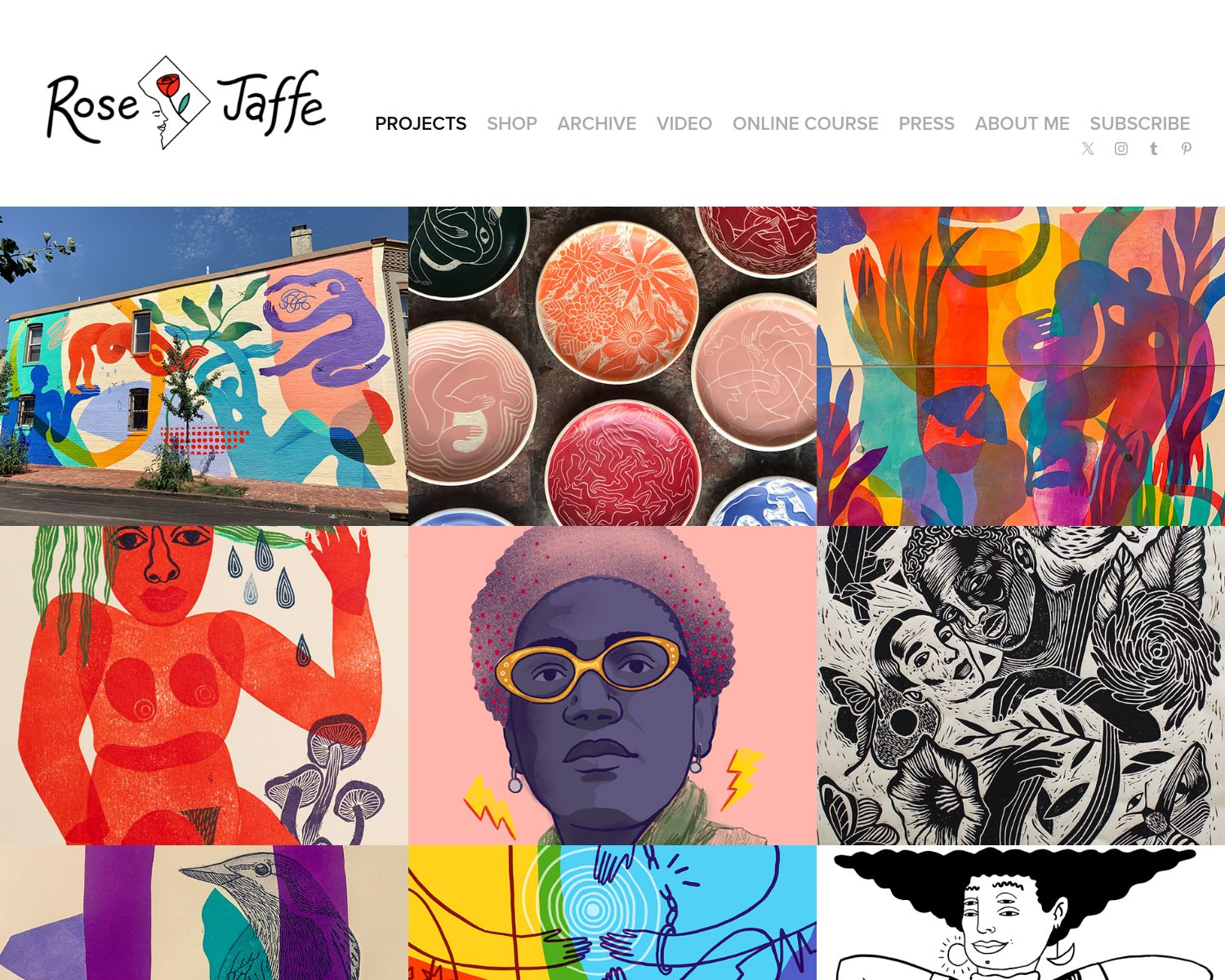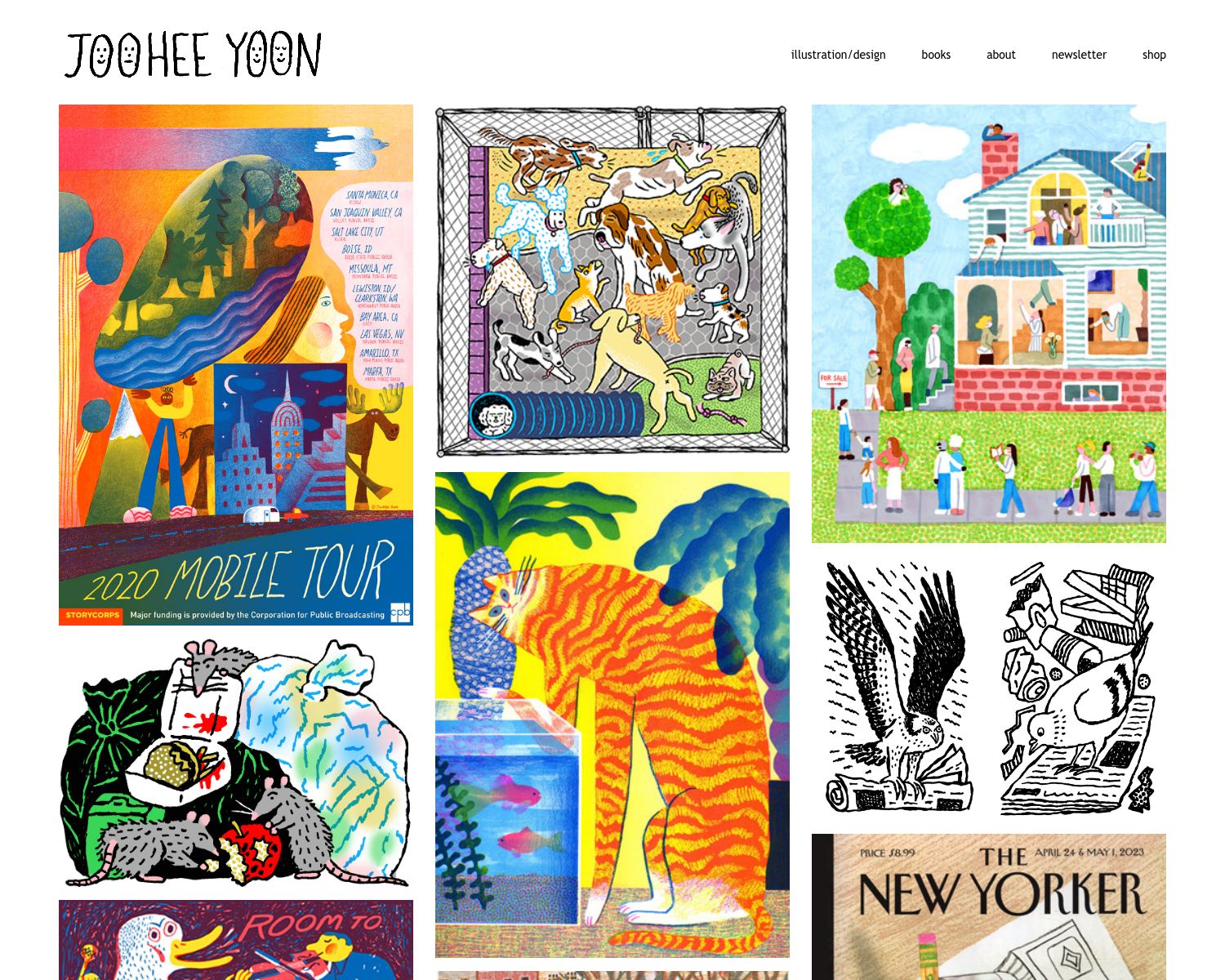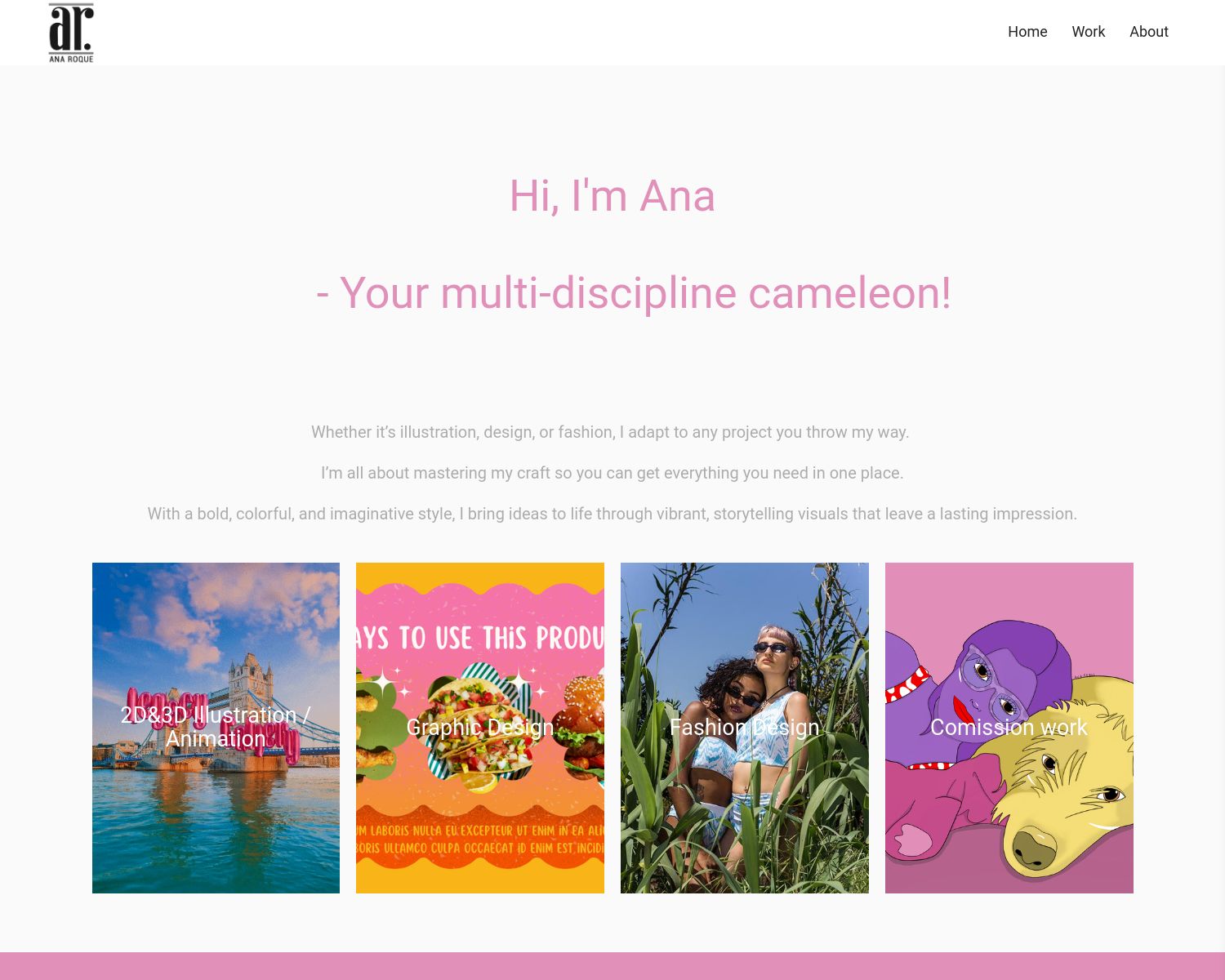
Creating Your Illustration Portfolio: An 8-Step Guide (With Examples)

Sam Hindman
Published onIf you're an aspiring artist, there's only one thing that's as important as your skill: Standing out. The fact is that illustration is the most saturated position in the graphic design industry. You're not just up against a few dozen people, either; The rise of remote work makes the entirety of the internet your competition.
So, that leaves a question: How do you stand out among other prospective art directors and illustrators? By creating a beautiful, organized, and (most importantly) visible portfolio website. Today, we'll break down the eight non-negotiable steps to creating an unignorable illustrator portfolio.
Why Do I Need An Illustration Portfolio?
First and foremost, let's clarify the tangible benefits that illustration portfolios can give. Building an online portfolio of any kind takes a great deal of effort, so it's important that we go into the process understanding why that effort is so worthwhile.
The most obvious reason to build your own portfolio is that it will allow you to showcase your art properly. Illustrators often work in various mediums, from digital art to traditional sketches and motion design. Including a diverse range of work shows potential clients that you can adapt to different projects and styles and have a large array of interests.
This could also go the opposite way: if you're only interested in a specific niche, this can indicate to clients that you're the go-to person for that type of illustration.
An online portfolio lets you easily share your work with key decision-makers like art directors and graphic designers. These professionals often look for new talent on portfolio websites, so having a polished, accessible portfolio increases your chances of being discovered. So, if you want those coveted jobs and commissions, you have to have something to show the people on the hunt.
Step 1: Decide What Form Your Portfolio Should Take
Before the popularity of remote work and digital business, art portfolios typically had a physical form. It's important to note that having a strong online portfolio doesn't mean you should toss your paper portfolio in the trash.
A physical portfolio still has its place, particularly during in-person meetings, interviews, or presentations. In fact, these physical portfolios are a rarity that might make you seem quite committed and professional!
But let's discuss the online portfolio. An online portfolio allows you to instantly share your work with potential clients, employers, and collaborators worldwide. Whether through a simple link or social media, your portfolio is always accessible, making it easier to connect with opportunities.
Choosing A Quality Portfolio Website Host
Now, how do you decide where to host your portfolio website? A few things should stand out as especially important (since you're likely working in the graphic design industry).
Ease of Use: The more drag-and-drop features, the better. After all, you aren't a coding expert, and you shouldn't need to be one to land a gig. It also helps if the builder has pre-designed templates you can easily adjust and make your own, like what we offer at Journo Portfolio.
Customization: There's a delicate balance here. You want the portfolio builder to be accessible, but you also don't want something that looks generic. Make sure you have room to customize the layout, color scheme, and fonts.
Performance: A portfolio that loads slowly can deter potential clients from exploring your work. Make sure your chosen platform is optimized for fast loading times, even when displaying high-resolution images or multimedia content.
Step 2: Consider Your Target Jobs & Audience
Before building your illustrator portfolio, the next step is to conduct some research and self-reflection about your intentions.
Start by identifying the specific industries or types of projects you're most interested in. For example, if you enjoy illustrating for children's books, focus on showcasing work that appeals to publishers or authors in that field. If you're more focused on greeting cards, highlight designs that show your ability to convey emotion and creativity in small, impactful formats.
Take the time to research what art directors in your desired field are seeking. Do they prefer a clean, minimalistic presentation, or are they drawn to portfolios that tell a visual story? Are they looking for versatility or value a strong, consistent style?
Once these details are down pat, you're on your way to creating a website that attracts not just clients, but the right ones.
Step 3: Compile Some of Your Best Work
The next natural step is compiling the work you want to showcase on your website.
A common first question is, "How many projects should I feature?" Unfortunate as it may be, there is no singular concrete answer to that question. Avoid the temptation to include every project you've ever done. Instead, choose work that reflects your technical skills and aligns with the projects you want to attract. A well-curated portfolio leaves a stronger impression than one overcrowded with too many pieces.
Include a balanced mix of personal projects and commissioned work to showcase your creativity and ability to meet client needs. If you haven't had any clients yet, don't worry! What truly matters are your artistic skills.
Don't Be Afraid To Get Personal
Since illustration is inherently creative work, try not to get bogged down in the corporate mindset and make your portfolio website boring. This can easily happen under the guise of looking professional.
Take the time to include projects that have a personal significance or that particularly reflect your style and personality. This could be a self-portrait, a piece inspired by a life experience, or work that pushes creative boundaries. A portfolio that has pieces with a charming personal touch can set you apart from other illustrators and create a stronger connection with viewers!
Step 4: Take A Look At Other Illustrator Portfolios For Inspiration
When in doubt, there's nothing wrong with finding inspiration in other professional artists! It can help immensely to have a few references when building out your website, especially if they have the same illustration style and general vibe as you do.
Below are three standout illustration portfolio websites that can serve as a solid North Star:
Rose Jaffe

When you first observe Rose Jaffe's portfolio website, three words come to mind: dynamic, colorful, and fluid. These are qualities that are inarguably fantastic for an illustrator to possess. This is what makes her portfolio such an excellent example.
The portfolio is configured so that all of Rose's projects are highlighted on her home page underneath pieces of her art. This immediately gives you a sense of her work. Aside from being organized by individual project pages, it also has organization in the art forms she practices. For instance, murals have their own section.
JooHee Yoon

JooHee Yoon is a highly experienced illustrator with a very high-profile client list, ranging from Apple to the New York Times. With such a reputation preceding her, it's natural that her work speaks for itself, front and center.
When you interact with the art pieces on her home page, you're taken to dedicated art pages with information about the piece and who it was created for. JooHee also has pages in her portfolio website dedicated to things like an online store and her newsletter, proving that having your own site can be beneficial for solidifying multiple income streams!
Ana Roque

Last but not least is Ana Roque's illustrator portfolio. Since we wanted to include different styles and illustrators with different experience levels, we felt that Ana's website was perfect for beginners to reference. Though she's a novice in the space, her website certainly makes a professional impact!
Instead of including her work on the front page of her website, she opted to get straight down to business. You'll find her services and packages listed immediately, which is excellent for those who want to cut the fluff and immediately tell visitors what they're getting into.
Step 5: Plan & Structure Your Illustrator Portfolio
Once you've researched, compiled your projects, and looked at a few references, it's time to get down to business and start crafting your portfolio. Here are some important tips/strategies for putting together a portfolio that's functional and aesthetically pleasing:
Use drop-down menus or categories to group similar work together, such as by medium (e.g., digital art, traditional sketches) or by project type (e.g., book covers).
Your home page is visitors' first impression, so make it count. Use full-width images or a striking video to showcase your most impressive work right away. This could be a slideshow of your best pieces or a dynamic video highlighting different projects.
Include a brief, engaging introduction on your home page that gives visitors an idea of who you are as an artist and what they can expect from your portfolio. This can be a short bio or a statement about your artistic philosophy.
Step 6: Add Other Pages to Your Portfolio
Illustrator portfolio websites have to include more than a simple curation of work. You have to make sure that throughout your site, there's an obvious voice and personal touch that shines through. Obviously, you'll keep your art front and center, but other pages might be helpful to include, like the ones below.
An About Page
The first helpful page to include is an About page. This is where you really have a chance to show off your experience and personality. Think of it as a mini artist resume, one that you can make as formal or laid back as you want.
If you have other skills that could help you stand out in the graphic design realm, this is where you should list them! You can also talk about why the art you create is so important to you and your values.
A Contact Page
This one might seem obvious, but sometimes people skip it! Having a contact page is vital for anyone who organically finds your website and wants to know the best way to contact you. Ideally, this is where you'd put your business number and business email. Still, if you don't have either of those yet, you can also leave a link to your Instagram profile or other art-related social media accounts.
Other Pages
Remember, your website is entirely your own! Don't be afraid to have fun with it and explore new ways of sharing your art with others. You can start a newsletter, write an art blog discussing your pieces, or set up a shop to sell merch!
Step 7: Refine & Edit Your Portfolio As You Improve
Step seven is important because the truth is that many consider their portfolio a one-and-done occasion. Unfortunately, this couldn't be further from the truth! You should make it a habit on your to-do list to update your portfolio as regularly as possible to make sure that you're staying up to date.
Any time you work on a new project, that's a sign that you're progressing in skill. If you have a website that's up-to-speed with where you are in your career, it gives an aura of productivity and ambition.
Step 8: Send Your Portfolio Out
Illustrator portfolios aren't meant to stay hidden! You must take proactive steps to share that bad boy with the world. You can do this strategically, in cold pitches and email blasts, or simply add a backlink to your website in places like your social media bios and email signature.
Start Building Your Illustration Portfolio Today!
If you follow these eight steps, you're guaranteed to have an illustrator portfolio that you can be proud of. Pursuing a career in art of any kind is a feat by itself, so don't be discouraged if things don't click right away. Instead, spend time honing your craft, getting familiar with the field, and building the best portfolio you could have!
Journo Portfolio prides itself on balancing ease of use and potential for customization, making it one of the best portfolio builders online. It's in the name, after all! Check out our complete list of features, and get started with your free account today.




